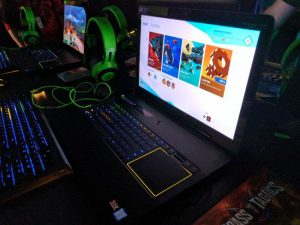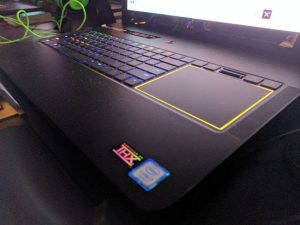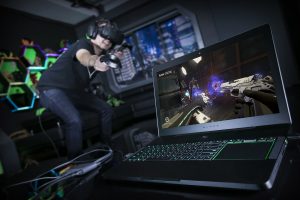

When looking at Razer’s latest big-screen Blade Pro, with an MSRP starting at $2,299, your eyes should open wide, especially knowing its predecessor ran for about $3,699. Given, this bad boy is a good 17.3 inches, it definitely strayed away from the last Razer Blade Pro’s dimensions, and hey, it’s declaration of being one of the slimmest gaming laptops you can buy also meant you had to pay the piper. Razer made the new version cheaper with some major compromises. Nothing surprising here. In fact, what is the first thing you’ve got to reduce to take away some of those dollar signs? The answer lies in the graphics, and in this case, the new Razer Blade Pro dropped from the quite high-end Nvidia GeForce GTX 1080 GPU, to a more mainstream Nvidia GeForce 1060. With that, the display wouldn’t handle as high specs the other rig’s display, hence this version now sports a 120Hz IPS 1920 x 1080 full HD LCD screen.


So this is a laptop that isn’t exactly living up as “the most powerful, nearly a desktop, type of rig”, as its bigger, badder bro. However, there’s so much good still going on here, and you could find yourself become a fan, because the point is to meet the needs of folks looking for something powerful and under 4 grand. Additionally, this is giving Razer a chance to fill a niche in the laptop space that basically isn’t there. Not that we don’t hear about thin gaming laptops on the daily, but they’re most likely far cheaper than this, and in turn, not quite powerful enough for serious gamers.



 Laptop & Tablet Parts
Laptop & Tablet Parts




















